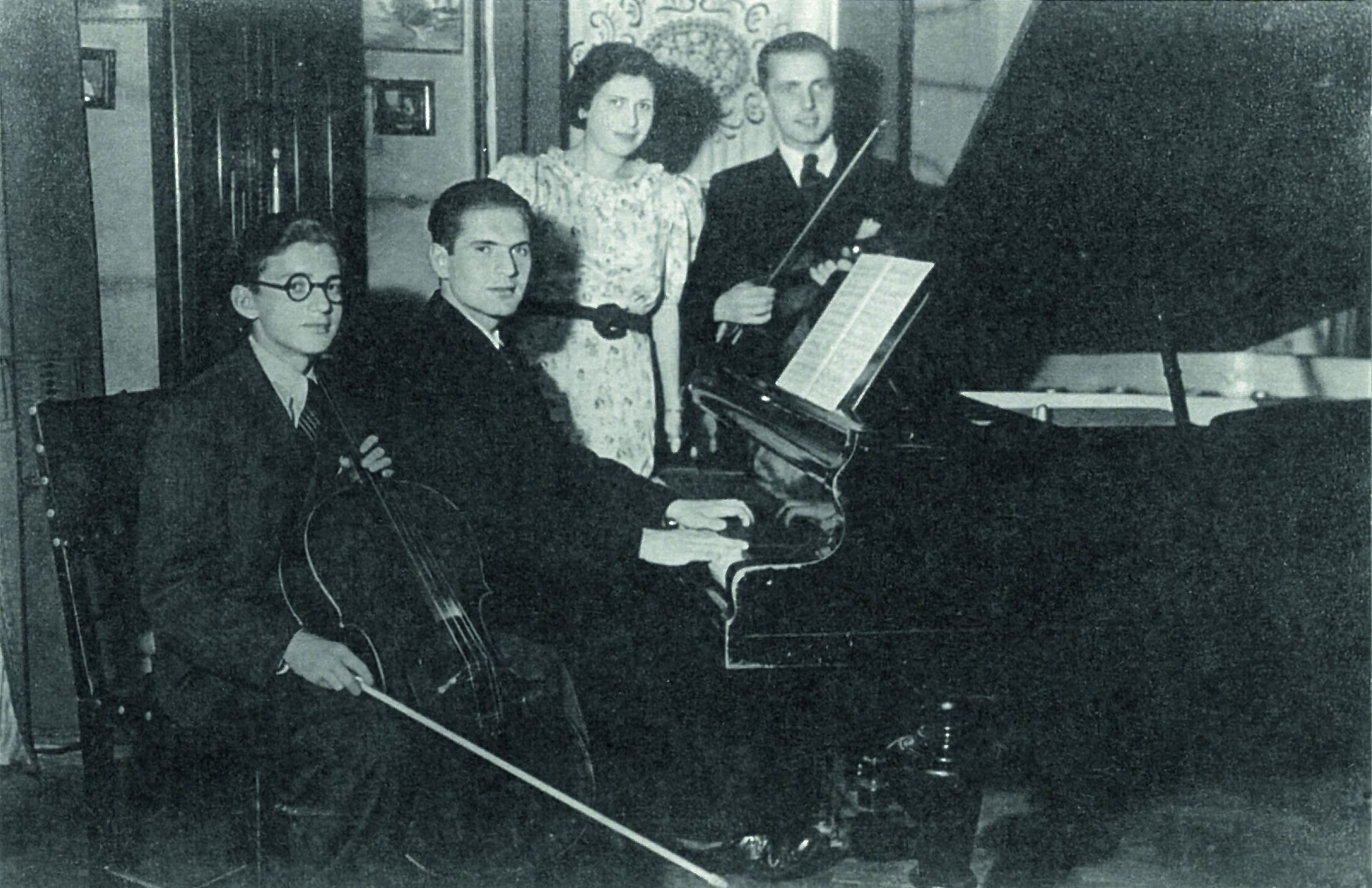Freddie Knoller
(Vienna 1921 – London 2022): Life on the run
“Every event in my life leads to Auschwitz”

Alfred (Freddie) Knoller was born on 17 April 1921, the youngest of three sons, into a middleclass Jewish family. He had a happy childhood, learned to play the cello, collected stamps and attended grammar school like his two brothers. The three brothers Freddie, Erich and Otto performed together as “The Knoller Brothers Trio “. In 1934 Freddie Knoller celebrated his Bar Mitzvah at the Polish Temple in Vienna.
Immediately after the “Anschluss” of Austria to the German Reich, Alfred’s parents David and Marja Knoller tried to get their children to safety. They themselves remained in Vienna, aged 53 and 56, and were deported via Theresienstadt to Auschwitz where they were murdered. Freddie Knoller managed to escape to Belgium in December 1938, where he found shelter in a camp for Jewish refugees. After the occupation of Belgium in 1940, he fled to France. He lived briefly with relatives in the unoccupied zone in Gaillac, but soon left for Paris. There he lived under a false name, Robert Metzner, and earned his living as a red-light district guide for the German occupying forces. After surviving a dangerous spot check by the Gestapo, in 1943 he fled once again. In southern France, Freddie Knoller joined the Résistance and went into hiding in the mountains. A number of months later he was betrayed and the Gestapo arrested and him subjected him to torture. When his Jewish identity was uncovered, he was deported from Drancy to Auschwitz on 7 October 1943.
“Upon stumbling into the cattle car at Drancy, that person lost his youth and naivety forever. For me, the Nazi system of degradation began in the crammed cattle car, and even though that experience gave just a foretaste of what awaited us at Auschwitz, it was an instructive one. By the time I arrived at Auschwitz, I was so exhausted that I barely noticed how bizarre it was to hear music played by prisoners in pyjamas on arrival, in a place where the scenery was dominated by black-uniformed SS men, watchtowers and barbed wire.”
Freddie Knoller was interned at the camp Auschwitz III-Monowitz, where he had to do forced labour in the IG Farben Buna factories. A French fellow inmate helped him survive. On 17 January 1945, ten days before the liberation of Auschwitz, he was evacuated. He was sent on a death march arriving first at Mittelbau-Dora and then finally Bergen-Belsen, where he was liberated on 15 April 1945.
Once back in France, Freddie Knoller was reunited with his brother Erich, a soldier in the US Army. In 1947 he emigrated to the USA, where he met and married his British wife. In accordance with her wishes, the couple moved to the UK in 1952. He regularly appeared as an eyewitness and has written two books about his life. Freddie Knoller passed away on 26 January 2022.
Literature and sources
Freddie Knoller, John Landaw, Desperate Journey. Vienna – Paris – Auschwitz, London 2002.
Freddie Knoller, Living with the Enemy. My Secret Life on the Run from the Nazis, London 2005.
Interview with Freddie Knoller, The Wiener Holocaust Library: https://www.theholocaustexplained.org/freddies-interview/
Autobiographical interview with Freddie Knoller, 2007. Archive of the Fritz Bauer Institute, Norbert Wollheim Memorial; online: http://www.wollheim-memorial.de/de/freddie_knoller#_edn1
Lucy Wallis, The Jew who got a job offer from the Nazis. BBC News, 20. Jänner 2015; online: https://www.bbc.com/news/magazine-30811763
Resistance Fighter, Holocaust Survivor Freddie Knoller BEM is 100. Jewish Care, 15 April 2021; online: https://www.jewishcare.org/news/1605-resistance-fighter-holocaust-survivor-freddie-knoller-bem-is-100
